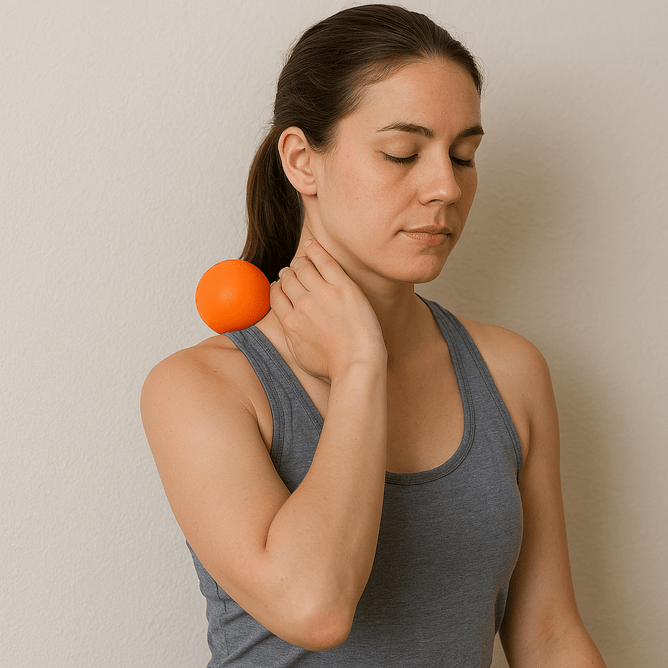Neck and shoulder tension is one of the most common issues clients bring to the table—literally. Whether it’s from desk posture, driving, lifting, or simply the cumulative strain of daily movement, these areas tend to carry a disproportionate load. At Muscles & Mind, we specialize in targeted, results-driven massage therapy that addresses these patterns with precision and care.
For clients between sessions, self-myofascial release (SMFR) offers a simple, effective way to maintain mobility, reduce discomfort, and support the work done in-clinic.
What Is Self-Myofascial Release?
Fascia is the connective tissue that surrounds and supports muscles. When it becomes restricted due to overuse, poor posture, or repetitive strain, it can limit range of motion and contribute to pain.
Self-myofascial release uses sustained pressure to soften and mobilize these tissues. Unlike fast or aggressive rolling, SMFR focuses on slow, targeted compression that encourages the fascia to release without triggering protective tension.
Why Target the Neck and Shoulders?
These regions are biomechanically complex and frequently overloaded. Key structures include:
Upper trapezius and levator scapulae: Often tight from prolonged sitting or screen use
Scalenes and sternocleidomastoid: Involved in breathing and head positioning
Suboccipitals: Small muscles at the base of the skull that contribute to headaches and neck stiffness
Releasing tension in these areas can improve posture, reduce referred pain (especially into the head and arms), and enhance the effectiveness of professional massage treatments.
3 Techniques to try at Home
These techniques are designed to be safe, accessible, and complementary to clinical care. All you need is a soft massage ball, towel, or your hands.
1. Suboccipital Release
Lie on your back with a soft ball or rolled towel under the base of your skull.
Let your head rest fully, allowing gentle pressure into the suboccipital region.
Hold for 1–2 minutes, breathing naturally.
Benefits: May reduce tension headaches and improve neck mobility.
2. Upper Trap Compression
Stand with a ball between your shoulder and a wall.
Lean gently into the ball, finding a tight or tender spot.
Hold for 60–90 seconds, then slowly roll the shoulder to integrate.
Benefits: Helps release shoulder elevation and improve scapular movement.
3. Scalene Glide
Use your fingertips to gently trace down the side of your neck, just behind the collarbone.
Apply light pressure and move slowly, following the muscle line.
Repeat 3–5 times, staying within a comfortable range.
Benefits: Can improve neck rotation and reduce tension around the thoracic outlet.
When to use SMFR
Self-myofascial release is most effective:
Between massage sessions to maintain progress
Before or after exercise to support recovery
During long workdays to counteract static posture
It’s not a replacement for professional treatment, but a valuable adjunct that supports long-term results.
Final Thoughts
Self-myofascial release is a practical, evidence-informed tool for managing neck and shoulder tension. With just a few minutes a day, clients can improve mobility, reduce discomfort, and support the work done in-clinic.
For more guidance or to explore how we integrate SMFR into our massage therapy sessions, reach out to Muscles & Mind. We’re here to support lasting, functional results—one layer at a time.
